When most people think of Sierra Leone, the first thing that comes to mind is civil war, blood diamonds, and Ebola. But Sierra Leone hopes to change that image and put its traumatic past behind. Sweet Salone, as it is called by locals, is safe and has been deemed one of Africa’s 10 most peaceful countries by the Global Peace Index. With great food, rich culture and history, friendly people, and some of the best beaches in West Africa, this diamond in the rough is ready for a tourism boom. It may not be as popular or as developed as other West African countries like Ghana or Senegal, but adventurous travelers are in for a treat. Traveling to Sierra Leone requires a bit of planning, so here’s everything you need to know to visit.
VISAS
All visitors must have a valid passport or travel document and non-ECOWAS citizens require a visa. Sierra Leone offers Visa on Arrival/eVisa online for tourism, business, religious, academic, and family visit purposes. This Single Entry visa is valid for 30 days and is extendable in country at the immigration department. The cost depends on your nationality; the visa fee for African Union (AU) countries is $25 USD, while the fees for US and other non-AU countries is $80 USD. Payment is made online and once approved the visa is issued upon arrival at the airport. The visa fee is waived for citizens of 16 countries (mostly African and Caribbean) that have reciprocal visa fee waivers.
US citizens traveling for work or education reasons, or those who wish to obtain a longer visa, must apply thru the Sierra Leone Embassy in Washington DC. This requires you to mail in your passport, application and supporting documents. This Multiple Entry visa is valid for 3 years and costs $160 USD.
FLIGHTS
Several international airlines operate flights to Sierra Leone, but their schedules are fairly limited. There are not yet any direct flights from the US so you will have to connect somewhere. From New York, the quickest and cheapest route is currently on Royal Air Maroc connecting thru Casablanca, Morocco. The total flight time is about 12.5 hours.
AIRPORT FEES
Sierra Leone requires all arriving and departing airport travelers to pay a $25 airport SecuriPass fee (each way). This fee is not included in the flight ticket and can be paid online. Be sure to have a digital or hard copy of your proof of payment because it will be checked at the airport.
AIRPORT INFO
Sierra Leone’s new airport, the Lungi International Airport, opened in March 2023 and is located in Lungi, about 19 miles (30 km) from the capital, Freetown. The airport is small and with few flights, you’ll clear immigration fairly quickly. From there, grab your luggage in the baggage hall, then head to the arrivals hall. If you require any assistance or information, a Tourist Info booth is open from 10 am to 9 pm daily. Ideally you will have already reserved your water taxi (more on that below), so you’ll only need to find the correct company representative among the horde of people outside.
When departing Sierra Leone, you’ll need to check-in, then pass thru security and immigration. This also goes fairly quickly. If you’re hungry, there’s a cafe and restaurant in the arrival/departure hall (before security and immigration), as well as a restaurant near the upstairs departure gates. The menus aren’t extensive so you may want to eat beforehand, but if you’re in a bind they serve typical airport food like pizza and sandwiches. Be sure to have cash in case the credit card machines are inoperable; both Leones and American Dollars are accepted. The Airport lounge is nice, but unlike the old airport, no longer offers access through Priority Pass and some other loyalty programs so you may have to pay a fee of $50+ USD to use it.
AIRPORT TRANSFERS/WATER TAXIS
Getting to and from Freetown is a chore, but the experience is memorable. Freetown sits on a peninsula and is accessed by water taxi from the airport in Lungi. The ride is about 30 minutes. There are 3 companies currently operating: (a) Aberdeen Water Taxi (Sierra Leonean-owned); (b) Sea Coach Express (Nigerian-owned); (c) Sea Bird Express (Lebanese-owned). It is recommended to book in advance to ensure you have a spot on your preferred boat. The cost is $45 each way, though on occasion Aberdeen offers a diaspora discount. When leaving Sierra Leone, you should plan to take a water taxi about 3 hours before your flight departs. If you tend to get motion sickness, bring some Dramamine with you.
It is possible to drive from Lungi to Freetown, but the ride is nearly four hours and not ideal, especially during rainy season. If you decide to travel by road, a private transfer must be arranged in advance. There are future plans to build a bridge to connect Lungi and Freetown, which will significantly shorten the drive, but currently the ferry is the better and quicker option.
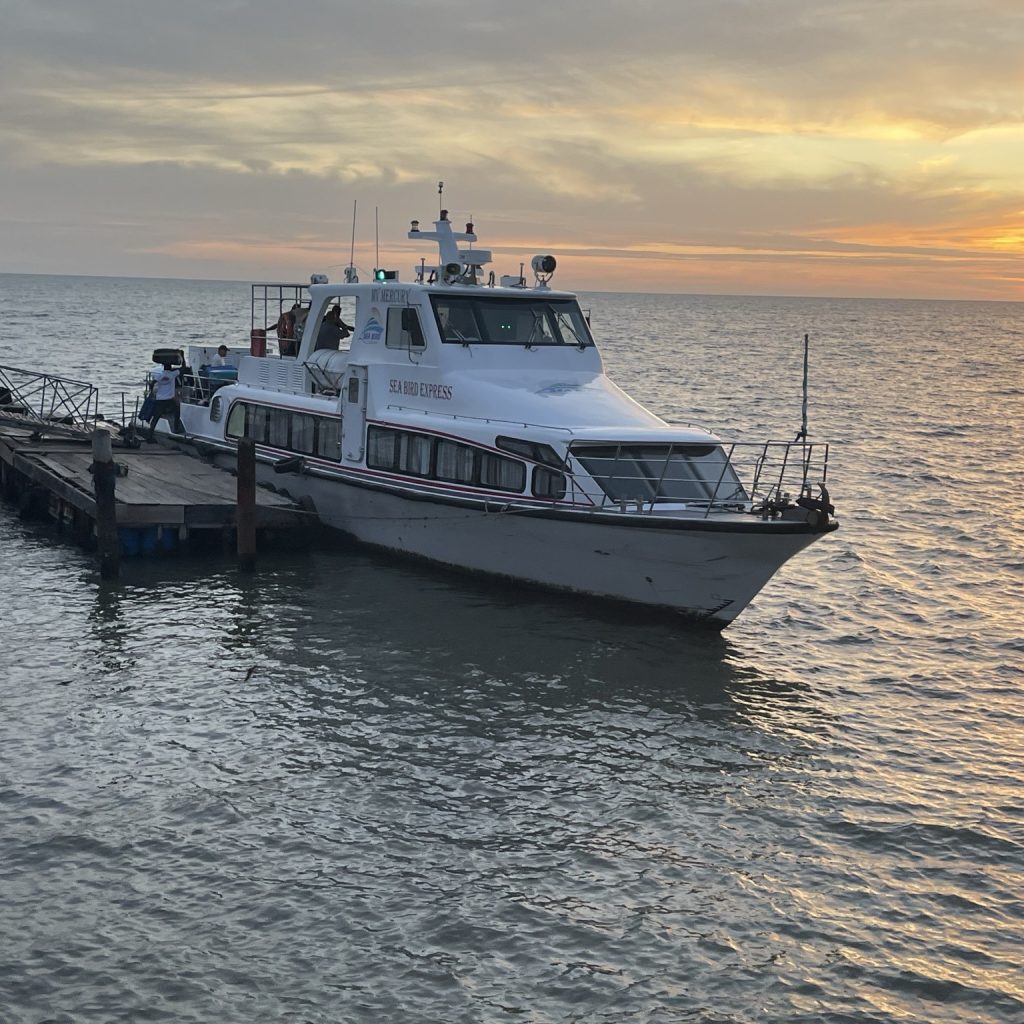
MONEY ISSUES
Sierra Leone’s currency is the new Leone (SLE), a re-denominated currency launched in 2022. Sierra Leone is a mostly cash-based society, so you’ll need some Leones during your stay. That means you either have to exchange foreign currency or withdraw funds from the ATM. Don’t expect to use credit cards often, except at major hotels.
At the airport, there are several currency exchange offices in the arrival/departure hall (they offer the worst exchange rate), as well as one ATM at the entrance/exit. ATMs in town can be limited or inoperable, so this may be your best chance to withdraw money, if needed. ATMs only allow you to withdraw 400,000 Leones at a time so you may have to make multiple transactions (and incur multiple fees).
American dollars and Euros are not officially accepted as legal tender, but they can be exchanged for Leones at banks or on the black market. Your hotel or tour provider may also be able to exchange currency, but you should verify in advance. It’s best to bring large denomination bills (50 or 100) dated series 2013 or later. When exchanging currency, be sure to request some small bills because street vendors or stores may not have change for larger bills.
WHERE TO STAY
If you want to be in the middle of the action and close to the popular restaurants, nightclubs and other attractions, Aberdeen or Lumley Beach are the best places to stay. If you want a more chilled, upscale location, Hill Station is another popular area (the US Embassy is here). It’s a bit further from the city so you will have to take transport to get into town. There are several Black-owned accommodations in the greater Freetown area, including Cole Street Guesthouse in Murray Town, Toma Boutique Hotel in Aberdeen, and Stafford Lodge in Hill Station. If you need to stay overnight near the airport for a late evening or early morning flight, the Black-owned Tariq’s Resort and the Lungi Airport Hotel are only 3 miles away. If you prefer a larger hotel with coastal views, the Mamba Point Hotel, The Lead Hotel or the Radisson Blu Mammy Yoko will suit the bill.
TRANSPORTATION/GETTING AROUND
The three wheeled tuk-tuks called KeKes (pronounced Kay Kays) are the most popular form of transport in Freetown. They’re cheap and easy to catch because they’re everywhere. They hold up to three people and most rides will cost the equivalent of $1 to $4 USD, depending on distance. Always negotiate the fare beforehand. If you have a larger group or wish to travel further distances, it’s best to hire a car and driver. Expect to pay about $75-150 USD per day, depending on the destination.
WHAT TO EAT
Stews and soups figure prominently in Sierra Leonean cuisine and among the best is cassava leaf stew, the national dish of Sierra Leone. This spicy, flavorful stew uses cassava leaves as a base along with chicken, beef, fish or prawns. A similar variation is made with potato leaves. Groundnut soup, a meat and vegetable stew cooked in peanut sauce, is another popular dish. Rice is a typical accompaniment or fufu, a pounded cassava ball. Binch beans (black eye peas) are a staple, often served with boiled plantains or yam. And of course, Sierra Leone has its own version of Jollof, a tasty West African rice dish made with rice, tomatoes, onions and spices. Being a coastal country, grilled lobster, fish and other seafood is readily available.
Street snacks are also popular, with some of the favorites being granat cake, a crunchy snack similar to peanut brittle; coconut cake, a cookie made with flour, coconut and sugar; fried plantain chips, crispy deep-fried plantain slices; and puff puff, fried dough balls similar to donut holes.
Beloved drinks include Bissap, a sweet, reddish juice made from hibiscus leaves; Tombe juice, a sour juice made with tamarind pulp, sugar and spices; and Ginger Beer, a non-alcoholic ginger drink. Popular alcoholic drinks include Star beer, the locally brewed beer, and Palm Wine (aka Poyo), made from the fermented sap of coconut palm trees.
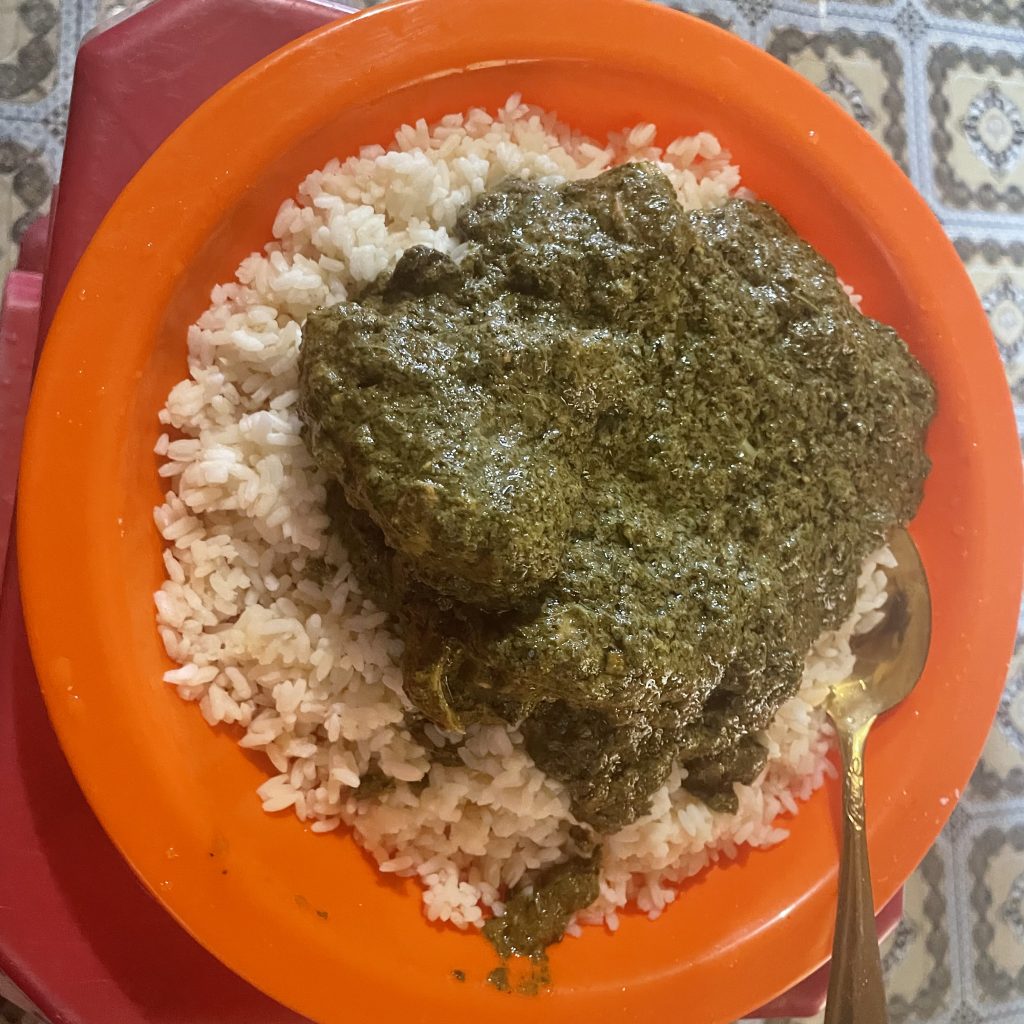
WHAT TO DO
No trip to Sierra Leone is complete without a visit to the Cotton Tree, the centuries-old, historic symbol of freedom in Freetown. The towering tree stood in the center of the city and was its most visible landmark until it was felled during a rain storm in 2023. Today, the trunk and roots remain as a testament of its massive size and resilience. Other sites in the city include the National Museum, the Peace Museum, the National Railway Museum, and St John’s Maroon Church, built in 1820 by freed Jamaican slaves.
At 1,850 feet, Leicester Peak offers the best panoramic views in all of Freetown. From there you can see the entire city of Freetown, the Atlantic Ocean, and the rainforest. To get to the mountain peak, you can drive or take a 40-minute hike from the US Embassy in Hill Station.
Sierra Leone has some of the most beautiful beaches in West Africa and there are several you should not miss. River No. 2 Beach is the most popular and well known of Salone’s beaches. This is the place to be on Saturday and Sunday, when the beach comes alive with people everywhere. Beachfront restaurants serve grilled seafood, chicken and drinks, and there’s a live DJ all day and into the evening. Sunday nights feature a bonfire and fireworks. Tokeh Beach boasts white sand, calm, turquoise waters, swaying palm trees, and its home to two of the best beach resorts in Salone. Its the perfect place to swim, relax, and take in spectacular views. Bureh Beach is popular with local and visiting surfers due to its great waves. The swells make swimming more difficult here, so caution should be exercised.
Sierra Leone has more than 20 islands, each offering picturesque vistas and unique experiences. Some of the most well-loved islands are Banana Islands, a cluster of three islands situated southwest of the Freetown peninsula and known for watersports, and Turtle Islands, a group of islands popular with scuba divers and snorkelers who visit the surrounding coral reefs and shipwrecks. For nature and wildlife lovers, there’s Tasso Island, known for its eco-tourism project, watersports and birdwatching, and Tiwai Island, a wildlife sanctuary surrounded by lush rainforest. And for the heritage travelers and history buffs, there’s Bunce Island, a historic site which was a hub for the transatlantic slave trade, and Sherbro Island (aka Bonthe Island), Sierra Leone’s largest island, which was another trading post during the slave trade. British actor Idris Elba recently announced plans to develop Sherbro Island into a Smart Eco-city.
Sierra Leone offers many opportunities for hiking, biking, ATVing, bird watching, wildlife sighting, and other nature activities. The Tacugama Chimpanzee Sanctuary, nestled in the rainforest in the Western Area Peninsula National Park, is home to more than 100 rescued chimps. Visitors can take guided tours and forest hikes to see the chimps and learn about the various conservation, education, and outreach programs to protect their natural habitats. Other frequently visited locations include Sugarloaf Mountain, Mambo Waterfalls, Gola Forest, Outamba-Kilimi National Park, and Mount Bintumani.
Sierra Leone also has a rich cultural heritage with numerous rural villages willing to welcome guests to share their culture and way of life. Some even offer overnight visits and homestays. Visits should be arranged in advance.
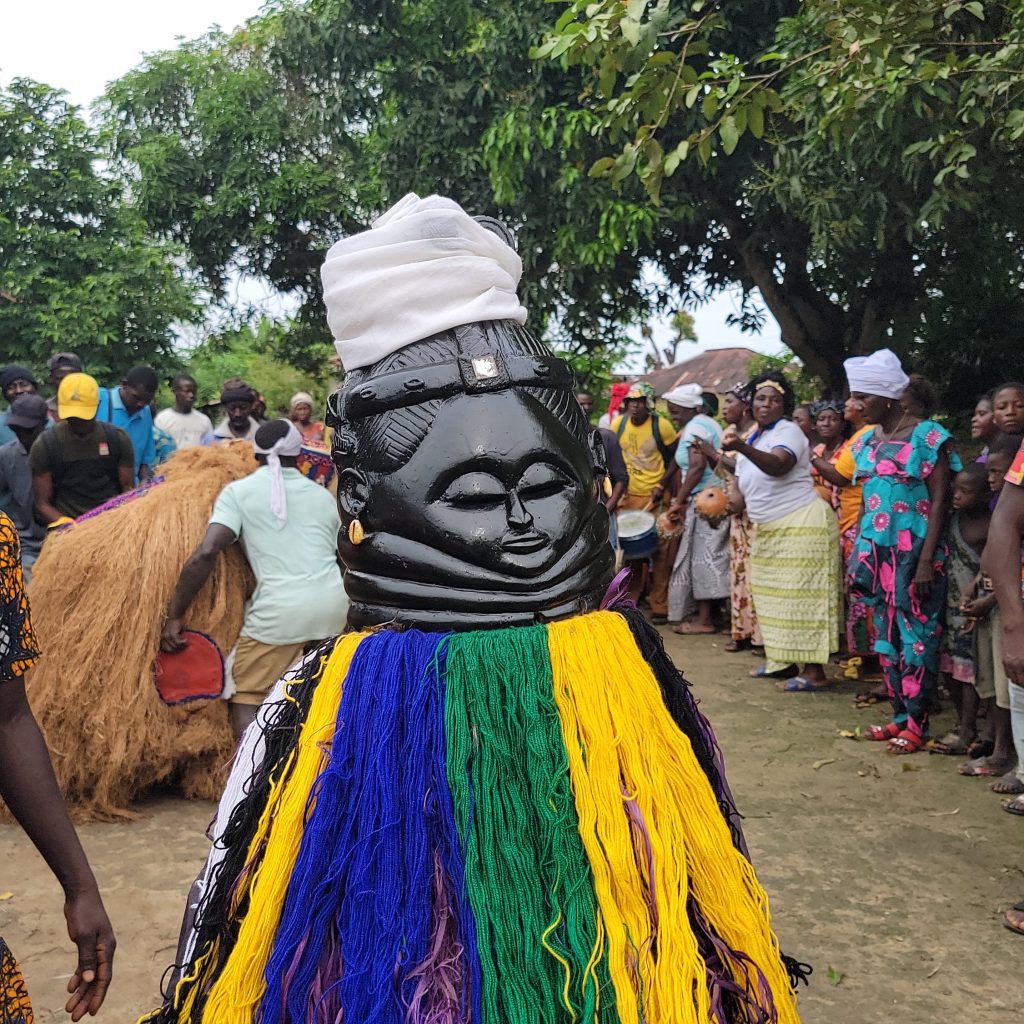
WHERE TO SHOP
The Big Market is Freetown’s most popular place to shop for fabrics, clothing, jewelry, artwork, drums, masks, baskets, and a variety of other hand-crafted wares. This indoor market is a bit more subdued than other West African markets, but you still must be prepared to haggle and bargain for the best deals.
The Lumley Arts and Crafts Market is small, unassuming, and hidden from the main road, but if you ask around everyone knows the place. Originally founded by local women to promote Sierra Leonean culture and tradition, today it’s a collection of jewelry, textile, and woodworking artisans, both men and women. This is the place to go for unique handmade items and souvenirs.
If luxury fashion is your thing, check out some local designers like Madam Wokie, Izelia, Bivamiks Designs, The Pa Musa, and Vivid Emporium.
WHERE TO PARTY
Freetown has a vibrant nightlife that just might surprise you. Most of the fun is centered around Lumley Beach Road and Aberdeen which come alive at night. A few hotspots are the Leone Sky Bar, Jes Ka Mac, and Mamz Beach Bar, which has reggae night on Thursday. Other popular nightspots include the Scarlet Lounge at the Mamba Point Hotel, and the View Hotel, Restaurant and Sky Lounge, which is a rooftop venue with panoramic cityscape views.
WHEN TO GO
Sierra Leone has a tropical climate. Like most West African countries, it has a rainy season that lasts from May to October. August is the wettest month, with frequent torrential rains. The best time to visit is during the dry season from November to April, when temperatures average in the mid 80°s F.
HEALTH & SAFETY
The Yellow Fever vaccine is required for all visitors and a Yellow Card must be shown as proof of vaccination upon arrival. Anti-malaria medication is recommended as Sierra Leone is a high-risk malaria country. Visit the CDC website for more information about recommended vaccines and medications.
Healthcare is limited in Freetown, and even less so in remote regions, so travel insurance covering injury, illness, and medical evacuation is recommended.
HERITAGE TOURISM
Sierra Leone has an intimate connection to the African diaspora, which it is seeks to grow through tourism. Freetown was founded in 1792 as a settlement for formerly enslaved Black Americans, Afro-Caribbeans and other Africans who returned to their ancestral homeland upon liberation. Sierra Leonean Krios are their direct descendants. While today, Krios make up a small percentage of the population (less than 5%), the Krio language is the country’s most widely spoken and their historic Krio board houses (known locally as bod os) still play a prominent role in the city’s heritage. Sierra Leone is currently one of only two African nations granting citizenship to the diaspora based on DNA lineage. Learn more about that here.
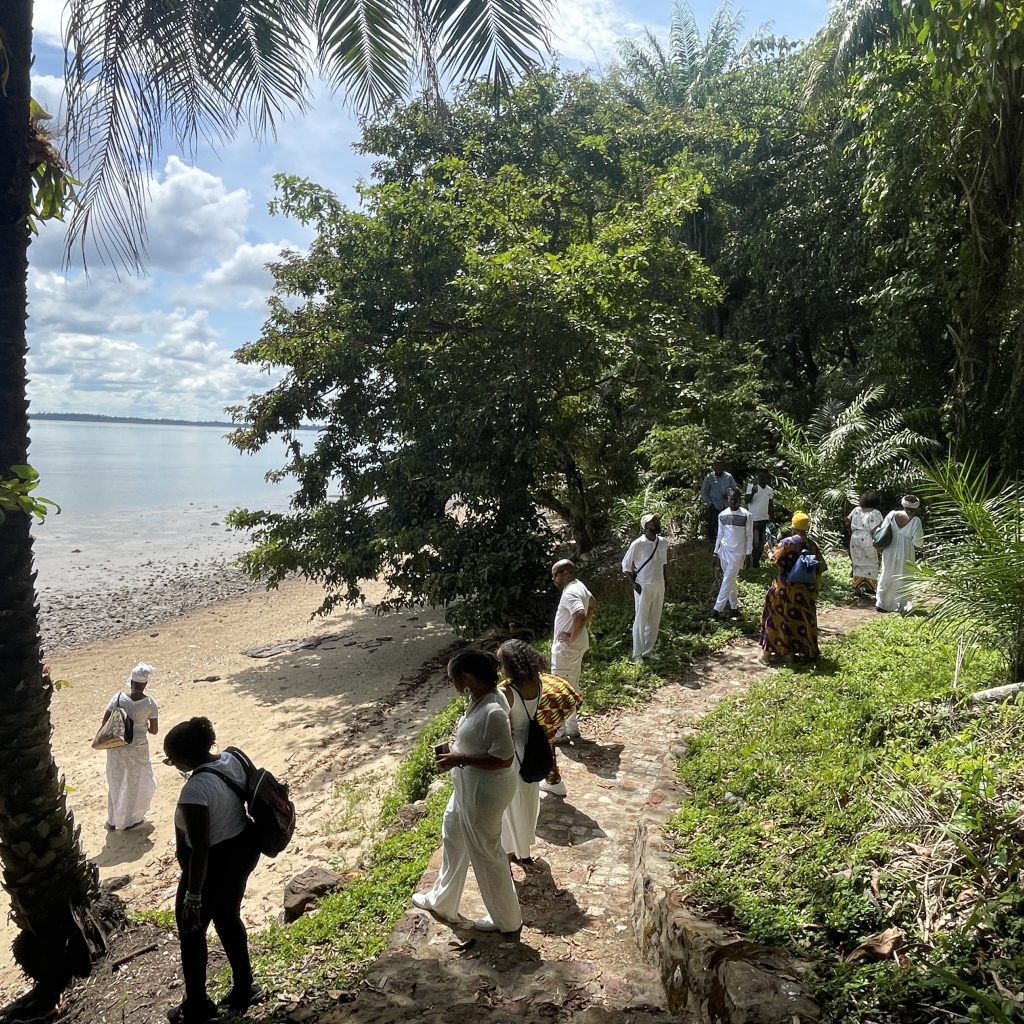
Sierra Leone’s tourism infrastructure is limited and it can be difficult to manage on your own. Feel free to contact us for assistance in planning your trip and creating a memorable journey in Sierra Leone.
Have you visited Sierra Leone? How was your visit?
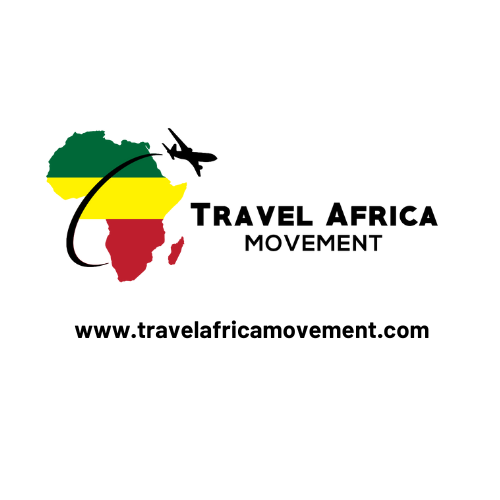

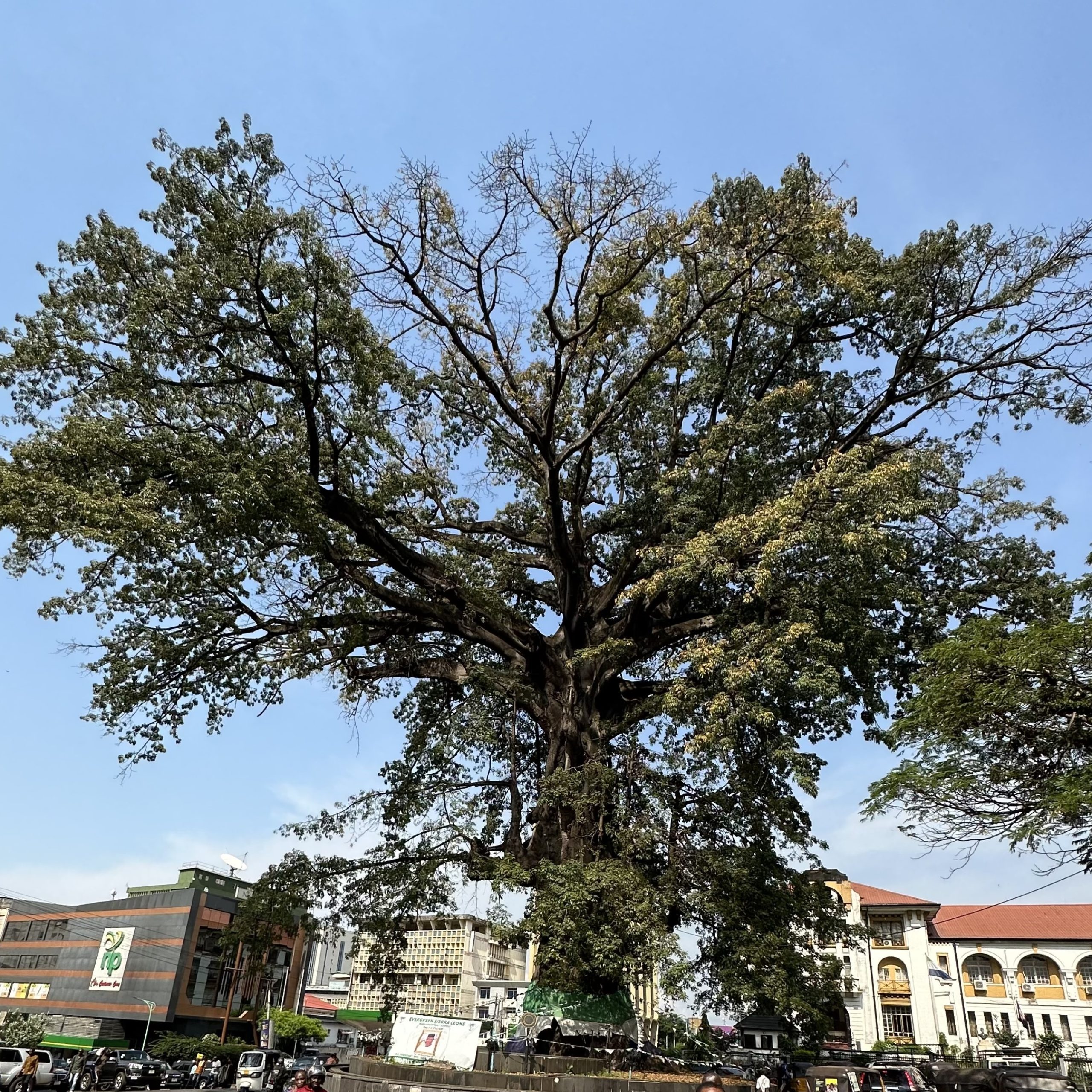
Comment (0)